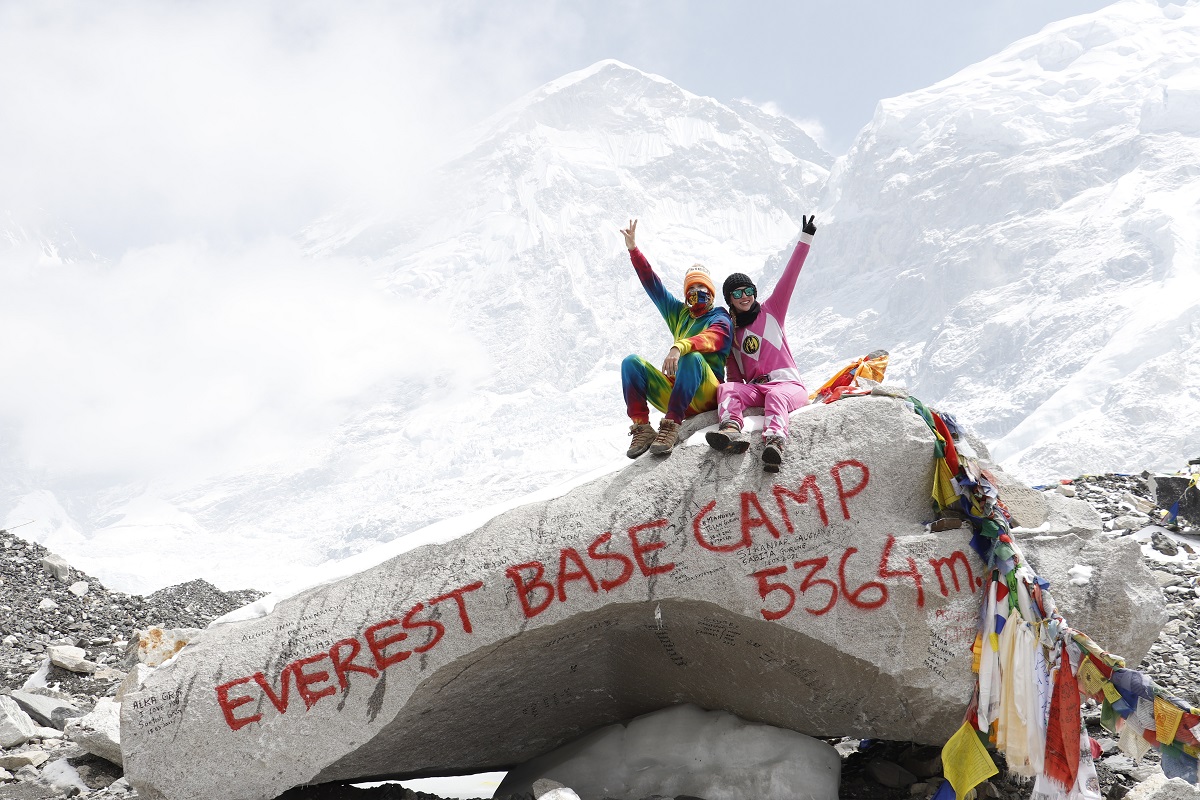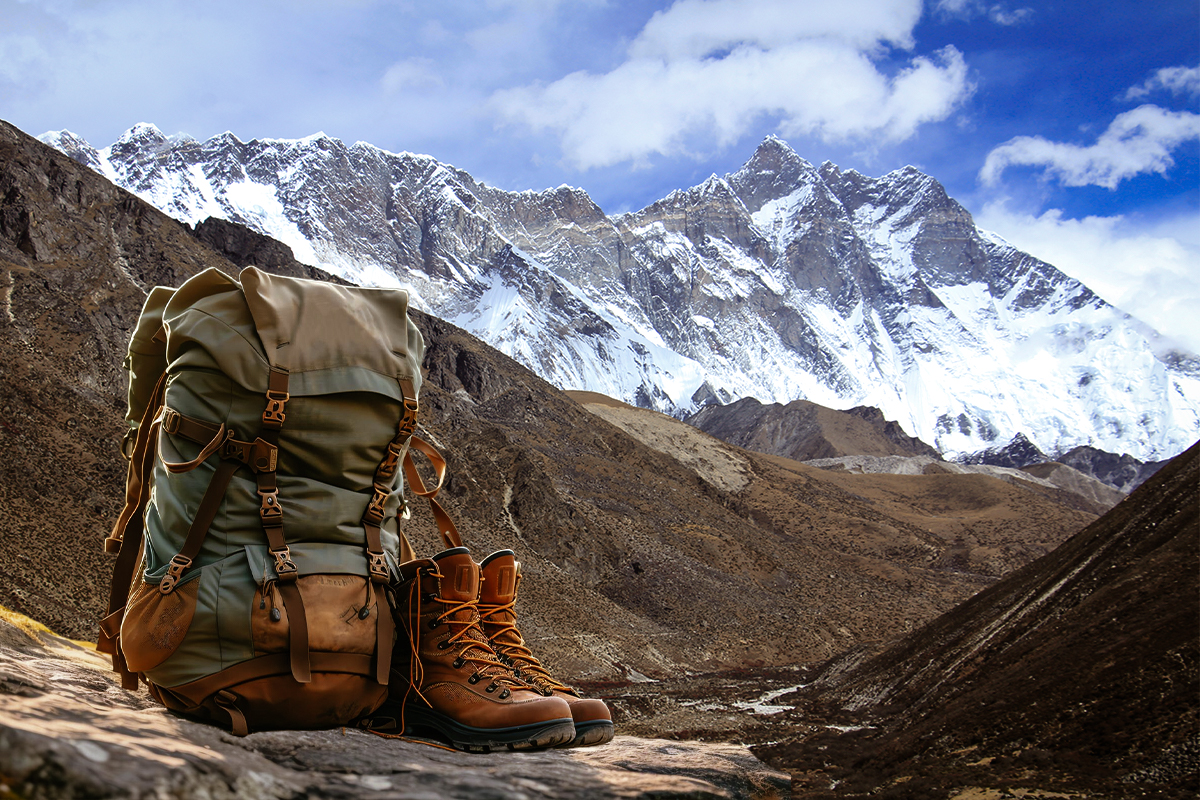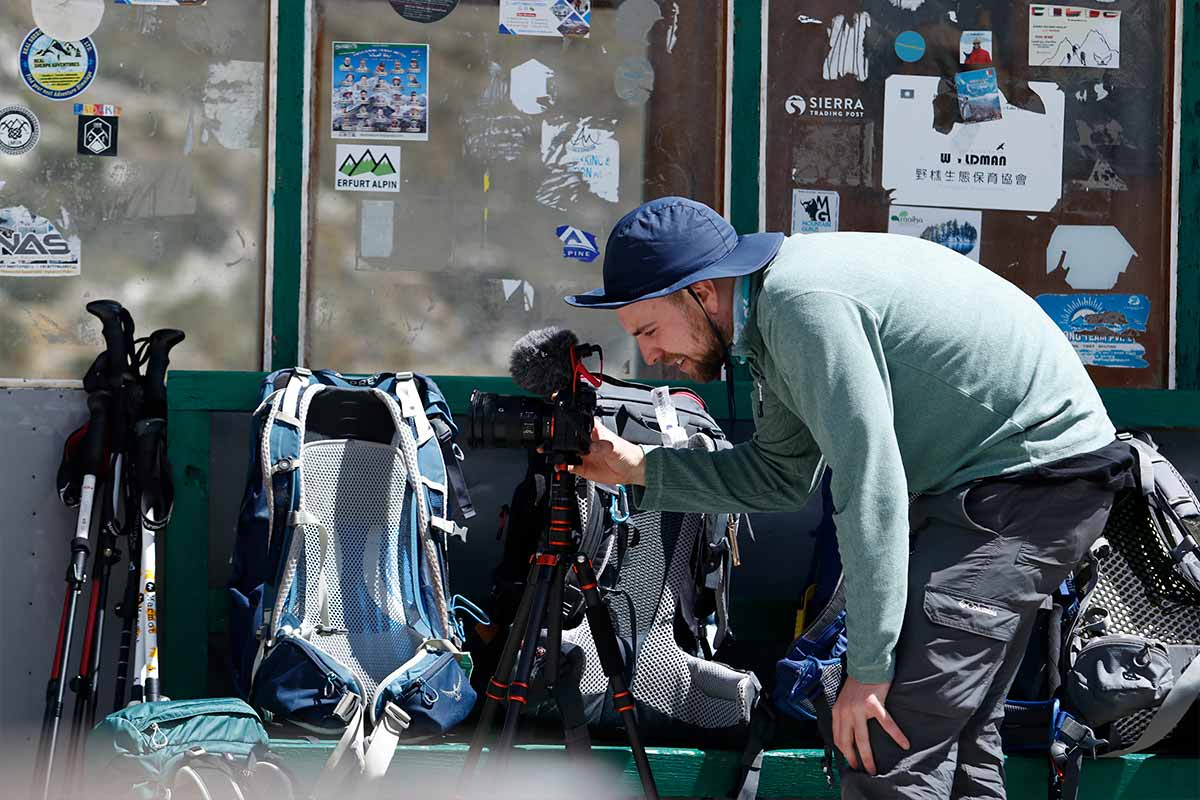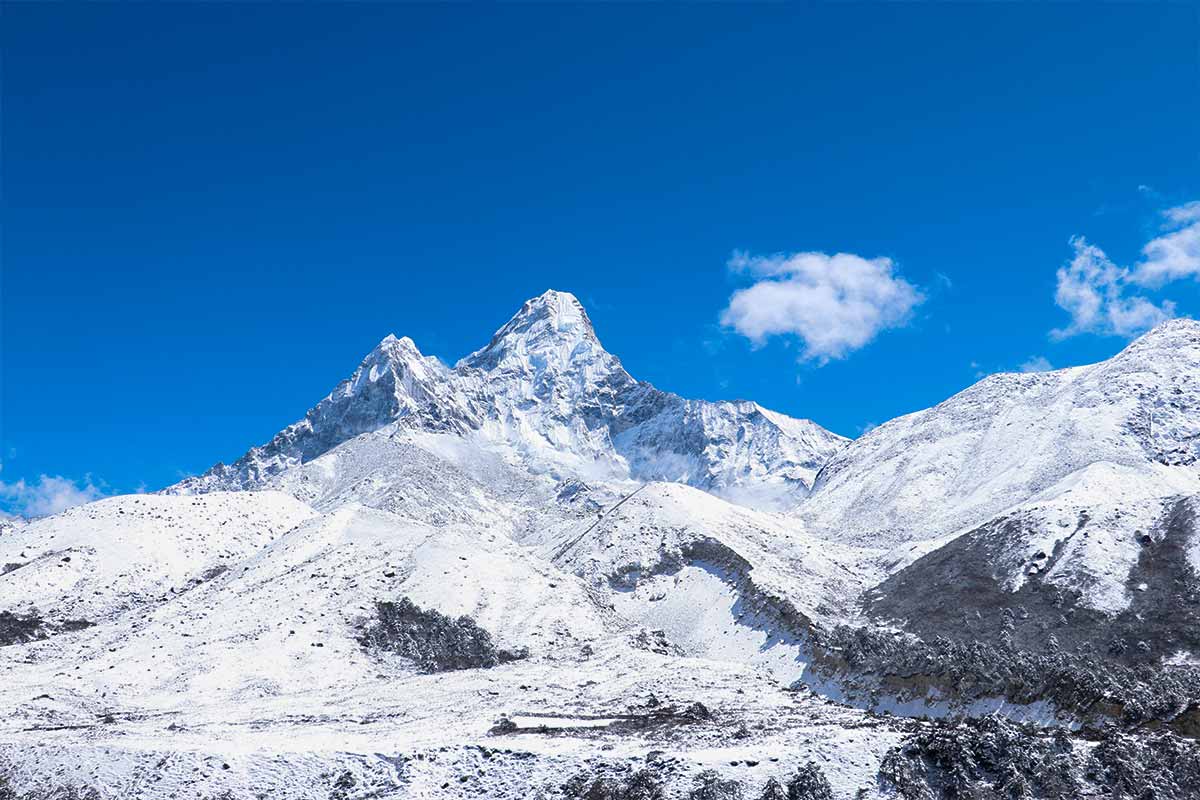Highlights of Winter Landscapes, Serene Trails, and Fewer Crowds
- Snowy Landscapes: Snowy Landscapes: The whole trail looks like a winter wonderland, and the snow-laden mountains, valleys, and forests create panoramic views.
- Crystal-Clear Visibility: Cold, dry air in January offers unobstructed views of the Himalayas, allowing for stunning, uninterrupted vistas of Mount Everest and neighboring peaks.
- Quieter Trails: Small numbers of trekkers on the path make January a very peaceful and non-crowdy time for trekking. This makes it much more convenient and appropriate to feel nature and surroundings.
- Shorter Wait Times: Reduced footfall translates into shorter wait times for food and lodging, making your overall smoother and less stressful.
- Wildlife Sightings: Winter will be a rare month for wildlife sightings, as they will be active and clearer with a snowy backdrop, such as Himalayan tahr and snow leopards.
- Photographic Opportunities: The snow and crystal clear air environment presents very good photography conditions, especially for shooting winter landscapes and dramatic mountain scenery.
- Authentic Local Experiences: Smaller numbers of tourists allow for a more intimate experience with the locals, providing ample opportunities to connect with the people and their traditions in the Everest region.
Everest Base Camp Weather in January

Daytime vs. Nighttime Temperatures: What to Expect at Different Altitudes
During the day, it can get as warm as around 5°C to -10°C (41°F to 14°F) at lower altitudes, while higher altitudes are between -5°C to -15°C (23°F to 5°F). Temperatures drop drastically at night. However, nighttime lows above 4,000 meters can dip to -20°C (-4°F) or colder. The sharp difference in temperature amplitude between daytime and nighttime requires trekkers to prepare with layers and cold-weather gear to stay comfortable when hiking and resting.
Recommendation Read: Winter Treks in the Everest Region
How Snowfall Impacts the Overall Trekking Experience
Snowfall occurs in January of every year. Thus, the higher the altitude, the more snowfall there will be. This turns trails into pretty winter scenarios, and simultaneously, the route becomes more difficult. Fresh snow makes the route slippery; hence, suitable boots with crampons are highly recommended for better safety.
Deep snow may also cover trail markers in some areas, requiring trekkers to stay closer to their guides. Even though the added snow makes it more difficult, it provides for an uncompromised, peaceful trek, as the snow muffles the traffic noises on the trail and makes it free of people.
Essential Packing Guide for a January Trek

1. Cold-weather Gear Essentials
- Down jacket or insulated jacket
- Thermal base layer
- Fleece or wool mid-layer
- Waterproof outer layer
- Warm gloves
- Winter hat
- Neck gaiter or balaclava
- Thermal socks
- Sunglasses
- High-SPF sunscreen
2. Footwear
- Insulated, waterproof boots with ankle support
- Grippy sole boots for slippery surfaces
- Crampons or micro spikes for added traction
Read our blog, Packing Equipment List for more details.
3. Tips for Managing Extra Weight and Staying Comfortable
- Bring only the things that you need to limit excess weight.
- Prefer shallow devices and items that can serve more than one purpose.
- Using a sleeping bag liner saves space and warms you up.
- Compact thermal layers that are easy to pack are preferred.
- Invest in an ergonomic backpack with padded straps to ease the journey.
- Put items weighing more at the bottom for better balance while trekking.
- Organize your stuff so it's pretty accessible during the trek.
4. Acclimatization Strategies for the January Trek
- Higher up during the day, sleep lower to help acclimatization.
- Climb at most 300-500 meters every day above 3,000 meters.
- Have rest days inserted, especially at Namche Bazaar and Dingboche.
- Keep good hydration to help acclimatization and prevent dehydration.
- Eat a balanced diet for energy and recovery.
- Be aware of altitude sickness and its seriousness; descent if necessary.
Featured Trip: 12 Days Short Everest Base Camp Trekking
5. Physical Fitness and Stamina Requirements
- Build cardio endurance (running, hiking)
- Strengthen legs, core, and upper body
- Train for 3-4 weeks
- Include flexibility exercises
- Add strength training
- Practice on inclines and uneven terrain
Fitness For Everest Base Camp
Pros and Cons of a January Trek
Pros:
- Peaceful trails with fewer trekkers.
- Stunning snow-capped mountain views.
- Crisp, clear air for better visibility.
- The serene, tranquil atmosphere with fewer distractions.
- Unique winter landscape offering a different trekking experience.
Cons:
Tips for handling common challenges on the Trek

- Layer up to stay warm and regulate temperature.
- Drink plenty of water to stay hydrated.
- Ascend slowly for proper acclimatization.
- Take regular breaks to avoid exhaustion.
- Carry waterproof gear and extra layers.
- Start early to maximize daylight.
- Prepare for extreme cold with proper gear.
- Pace yourself to conserve energy.
- Monitor weather forecasts for potential flight delays.
- Trek with a guide for flexibility and safety.
Recommendation Read: Complete Guidebook For Everest Base Camp Trek
Tea Houses and Lodges: What’s Available and What’s Closed
Teahouses and lodges along the route to the base camp remain open during January; however, the options become extremely limited at higher altitudes. Some of the isolated tea houses might be closed due to unfavorable weather conditions and the low count of trekkers in that season.
However, places like Namche Bazaar, Lukla, and Phakding have more options, though they are quieter during winter. If you are concerned about the costs, please note that the Everest Base Camp trek in January costs more for accommodations due to the limited services available in the winter months.
Food and Drink Options in January: What to Expect
Due to a lack of fresh produce, options are limited during the cold month of January. You'll have different types of warm and heavy meals: dal bhat, soup, and noodles available in the lower elevation areas. Simpler, more basic meals are available at high altitudes, and a higher percentage of options will be geared toward high-calorie meals that help fuel your trek. Few fresh fruits and vegetables are consumed, and trekkers should be prepared to focus their expectations on dry or packaged snacks. Hot drinks-tea, coffee, and hot chocolate-are a necessity when trying to stay warm in the cold temperatures.
Is January the Right Time for You?
January's trek to EBC is special, quiet, and challenging. It's quite demanding because of the cold temperature, snowfall, and fewer facilities compared to other seasons, so being physically and mentally well-prepared is necessary.
It might be the perfect time of year for more experienced trekkers who enjoy winter conditions and prefer solitude. However, if you are a novice in high-altitude trekking or sensitive to cold weather, it is better to consider trekking in the warmer months of March or October.
Featured Trip: Everest Helicopter Tour with Kalapatthar Landing
Final Thoughts
Flexibility and a strong mind are required during the Everest Base Camp Trek in January. The weather might get quite fickle during winter, so every chance of cancellation or other changes in one's schedule should be foreseen. Acclimatization should be carried out by properly gathering energy, hydrating one's body, and taking rest days whenever needed. Smart packing should include warm layering, a good sleeping bag, and a medical kit.
During this time, here at Footprint Adventure, we take you to enjoy the solitude and winter beauty, utilizing the quiet trails fully. Safety always comes first. Trek with one of our experienced guides and follow the altitude sickness protocols. With proper preparation, one gets a very rewarding and unforgettable experience.
FAQs
What is the weather like at EBC in January?
January at Everest Base Camp is characterized by below-zero-degree Celsius temperatures, especially at night. Snowfall is quite common, and the skies are clear blue, which makes it awesome, but the chill remains throughout the day. These are severe conditions; thus, this will be a true winter trek.
Is the EBC Trek possible in January?
It is possible to trek to EBC in January, although it is highly challenging because of cold temperatures and snow-covered trails. This period is quieter with few trekkers, but proper preparation will be required for the harsh conditions.
How much does the Everest Base Camp Trek in January cost?
The trek generally costs between $1,200 and $1,800. These expenses pay for your permits, guides and porters, food, and accommodations, but additional costs may be incurred due to winter conditions.
What is the typical itinerary for the Everest Base Camp Trek in January?
The normal schedule for the EBC trek in January is 12 to 14 days, which includes acclimatization days to cope with the altitude and cold. Before reaching the Base Camp, the major stops included as trekking spots are Lukla, Namche Bazaar, Dingboche, and Gorak Shep.





